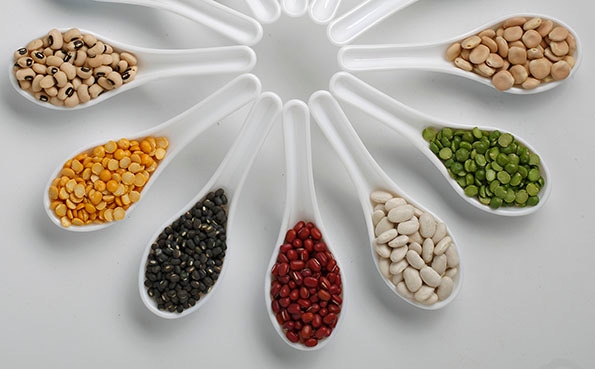Commodity group launches education campaign timed with 2016 International Year of Pulses to increase North American consumption of these healthy and sustainable foods.
December 20, 2015

The 2016 International Year of Pulses--a recognition of the superfood category that includes dry peas, beans, chickpeas and lentils--kicks off Jan. 1, 2016. Set for year-long observance by the United Nations, the global designation is intended to increase awareness of the benefits of pulses around the world.
The U.S. is a world leader in pulse production, growing more than 3.4 million acres of pulse crops annually, which yield more than 2.4 million metric tons of dry peas, lentils, chickpeas (garbanzo beans) and bean varieties (e.g., black, kidney, pinto). Currently 65 percent of U.S. pulse crops are exported. Despite their prominent role in domestic agriculture and the fact that 68 percent of Americans eat them on a regular basis, only 6 percent of respondents to a recent survey knew what the term pulse meant.
To educate consumers about pulses during the IYP, American pulse growers and industry members, in partnership with Pulse Canada, are pooling resources in a joint, multi-channel marketing effort. One goal of the campaign is to increase North American consumption of these healthy and sustainable foods.
“Many cultures around the world are familiar with the term pulse and embrace these superfoods as a staple in their diets,” said Tim McGreevy, CEO of the American Pulse Association and USA Dry Pea & Lentil Council. “In 2016, we aim to increase domestic demand for these crops by educating Americans that pulses are healthy and accessible sources of lean, plant-based protein. Increasing consumption will help provide solutions to many of our most common health problems--including obesity, heart disease and diabetes-–while also contributing to the long-term sustainability of our food system.”
As part of the campaign, which also includes content marketing, social media and digital advertising, consumers are invited to take the Pulse Pledge, a commitment to eating pulses at least once per week for ten weeks in 2016. Launching in time for resolution-minded consumers looking to improve their health or environmental impact in the New Year, the pledge is designed to highlight the many benefits of pulses, including:
Nutrition & health: Pulses are high in fiber and protein, vitamin and antioxidant-packed, low fat, and have been proven to lower cholesterol and reduce the risk of many chronic diseases.
Affordability: Pulses are a fraction of the cost of other proteins (the cost per serving for lentils is just $0.10 to quinoa’s $0.59 or beef’s $1.49).
Versatility: Pulses are likely best known as core ingredients in hummus, soups and burritos, but they offer so much more. They can be enjoyed in their whole form, pureed for use in everything from dips to desserts, and can be broken down into nutrient-dense gluten-free flours or plant-based protein powders.
Sustainability: Pulses have a low carbon footprint, are water efficient (using just one-tenth of the water of other proteins), and enrich the soil where they grow, reducing the need for chemical fertilizers that contribute to greenhouse gas emissions. Farmers often use pulses in rotation with other crops to increase bio-diversity, improve soil health, and increase productivity of farms.
Food Security: Easy to grow domestically and internationally, pulses will play a major role in meeting future food needs, with our growing population expected to require a 70 percent increase in agricultural production by 2050.
Beginning Jan. 1, consumers can visit www.pulsepledge.com to take the pledge and get more information about how to incorporate pulses into their diets, including recipes, preparation tips, shopping lists and more.
You May Also Like


